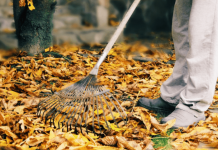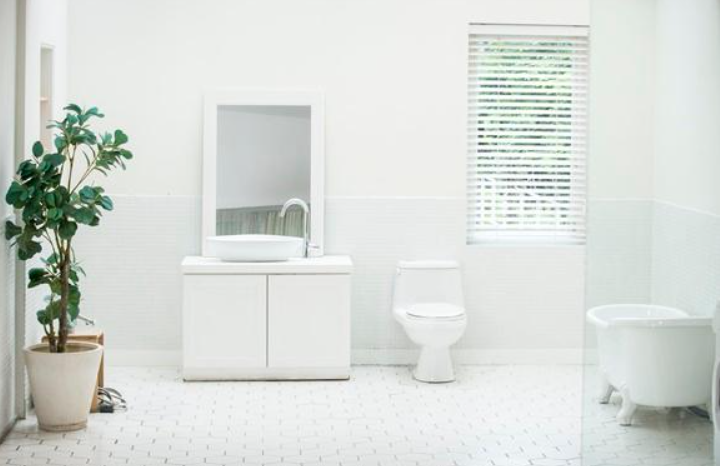The amount of trash a family can pour onto our faucets is not for the faint of heart.
How to remove all the dirt from the taps in the kitchen and bathroom
Here’s how to remove all the dirt from your kitchen and bathroom faucets. At the very least, ask your family to stay for a while to admire your work. Cleaning cloth (1 wet, 1 dry), water, kitchen soap, vinegar.
Things you need:
1. Cleaning cloth (wet 1, dry 1).
2. Water.
3. Kitchen soap.
4. Vinegar.
5. Non-abrasive cleaner.
6. Old toothbrush.
What should I do?
How to determine the type of faucet
Choosing the right faucet depending on the type of mechanism and installation is only half the battle. You should also make sure that it is the perfect size for your washbasin. Otherwise you will have to experience a lot of daily inconvenience and regular additional cleaning in the bathroom. Do you want to avoid these problems? Learn the rules for choosing faucets depending on the size of the sink you choose.
When choosing the size of the faucet, it is important to pay attention to two main parameters:
- Spout height – the distance from the surface on which the faucet is installed to its spout (measured vertically).
- Spout length – the distance from the main body of the faucet to its spout (measured horizontally).
Know the finish of your faucet. We recommend that you read the manufacturer’s instructions for the final finish of your faucet. The most common type of faucet is chrome, but there are other types that may require special care instructions.
How to simply clean a faucet
Everyone likes a shiny bathroom faucet. But hard water over time deposits calcium on the metal. This causes it to lose its luster and stain the fixture. But there is one very simple way to get rid of lime scale. To make it easier for you to clean your faucet next time, we recommend doing a simple bathtub procedure at least a few times a month.
Try a simple cleaning. First, try the easiest way to clean the faucet. Regular water or mild dishwashing detergent and water are good for most faucet cleaning. After cleaning, wipe the faucet with a dry cloth to make it glossy. This will also help prevent stains on the finish of the faucet.
- Take a mild dishwashing detergent and mix it with warm water in a small bowl. Lather up
- Moisten a washcloth with soap and water and wash the faucet in a circular motion.
- If there are stubborn stains on the faucet, knobs or its base, you need to prepare a paste of water and baking soda. Then take an old toothbrush, dip it in the paste and wipe the difficult areas.
- For areas where the faucet is adjacent to the sink or in crevices, it is best to use dental floss. Tear off a piece of dental floss and use it to give the cavities a good rub.
- Dampen the cloth with cool water and wipe all dirt, soapy water, and baking soda residue from the entire surface of the faucet.
- Dry the surface with a microfiber cloth and polish the faucet
How to intensively clean a faucet
Wear gloves to protect yourself from chemicals
Try a more intensive cleaning. If water or dishwashing detergent is not enough to remove debris from the faucet, the next step is white vinegar. You can remove water droplets and fingerprints with a clean cloth by mixing half vinegar and half water. If you are unsure of the faucet finish or you need to be careful, it is advisable to test the vinegar/water in a concealed area to make sure the coating is not damaged.
- Supermarkets sell special scale cleaners for faucets. Read the instructions on the package and apply the product accordingly. If the scale is not too big, simple vinegar will help you easily. Moisten a rag with it and apply it to the faucet.
- The only thing is that the removal process will be slow. Also, vinegar should not be used on iron and nickel. After applying the product or vinegar, simply wipe the faucet with cold water.
- If you can remove the faucet, pour the cleaner into a bag or a basin of some kind. Place the faucet in there and leave it for about 30-60 minutes.
- Then take the faucet out of the bag or basin and pour the cleaner down the sink.
- During this time, the cleaner or vinegar should work well on the surface of the faucet and dissolve the lime. But just in case, rub the faucet with a sponge or toothbrush.
- Wipe the faucet dry and polish it with a microfiber cloth.
How to effectively clean a faucet
Clean the edges thoroughly. An old toothbrush can be a great tool for cleaning around the edge where the sink and faucet meet. Clean the edges with dishwashing detergent or water. Wipe the faucet with a clean cloth.
So, how do you clean a chrome faucet to make it look like new, using natural ingredients? Ingredients that everyone has at home can help you do just that:
- Soap solution. The best soap in this case is laundry soap. It is grated, poured over with hot water and stirred until a homogeneous consistency is formed.
- Soda is a guarantee of cleanliness and absence of dirt. For this method, you will need a non-rigid toothbrush. Rub the sodium carbonate faucet with it, and then wash. You can additionally wipe it with a microfiber cloth for a better effect.
- Vinegar helps remove plaque. First, make a solution by diluting it with water at a ratio of one to one. Then apply it to the napkin and wipe the fixture.
- Lemon – helps fight stale dirt and also has a polishing effect, bringing back the original consumer properties. You can squeeze the juice from a lemon to clean it, or you can buy a ready-made concentrate. Just make sure that it is a natural juice. It is applied to a rag and wipe the faucet. Then it is washed and wiped with a dry cloth.
- Salt. Allows you to give a shine. Note, it is not recommended to make rubbing movements, just gently apply it. After that, wait a few minutes and gently rinse off the salt.
How to clean the tip of the mixer, How to clean the nose of the mixer, How to clean a drain
Normal cleaning won’t do anything here. The faucet nozzle is completed by the aerator with a strainer. This is where the thick layer of stone just likes to settle. The bigger the problem, the harder the water in our house. Of course, the aerator is a removable part, and for a few tens of rubles you can buy a new one and replace it. However, we are not going to do it every time there is limescale deposited on it.
Cleaning the drain area. The drain on a faucet is often the part that needs cleaning the most. To clean this part of the faucet, try using a non-abrasive cleaner such as Softscrub or Barkeeper’s Friend. We recommend that you check the vacuum in the hidden part of the faucet to make sure there is no damage to the finish.
The aerator must be unscrewed.
So, we can unscrew the aerator and put it in a bowl with vinegar overnight or fill a bag with vinegar and hang it on the screed so that the aerator is completely immersed in it. But first we will prepare a solution of vinegar and water in the proportion 1:1. In this way, we will have the opportunity to clean the strainer, which is inside, and get access to it from the other side.
You will need an ordinary toothbrush to do this, but we will do it after we take it out of the water with the vinegar. After this short procedure, the aerator will be good as new again and you can continue to use it. Consequently – we managed to save not a small amount of money.
- First you need to wipe the faucet so that there is not a drop of water left on it.Pour the vinegar into a bowl. Soak a piece of cloth – an old T-shirt or microfiber cloth – in it. Do not squeeze out any excess vinegar.
- Wrap the soaked cloth around the faucet. Press the cloth firmly against all surfaces and leave it for at least an hour. You can drip more vinegar on top.
- Then remove the cloth and rub the faucet with a sponge. You will see how easy it is to remove lime scale.
- If the method didn’t work the first time, try the same thing again.
- Dry the faucet again and polish it
Many companies offer a lifetime warranty on new faucets installed. The warranty may be voided if an alkaline drain cleaner or other corrosive cleaner is used on the faucet. If there is a warranty, the manufacturer recommends cleaning the faucet.
Some faucets have a special finish called a live finish. This faucet is designed to develop seniors and patina. If you rinse the faucet with a lot of water, the patina will be removed partially or completely. This is a matter of personal taste.
A sponge or abrasive brush is not suitable for most finishes. If in doubt, check the hidden area first.
Another option for cleaning the faucet can be a mild glass and surface cleaner.
To make your chrome faucet shine and shine, pour baby oil into a cotton swab. Polish the faucet with baby oil. You will see your reflection smile at you.



















